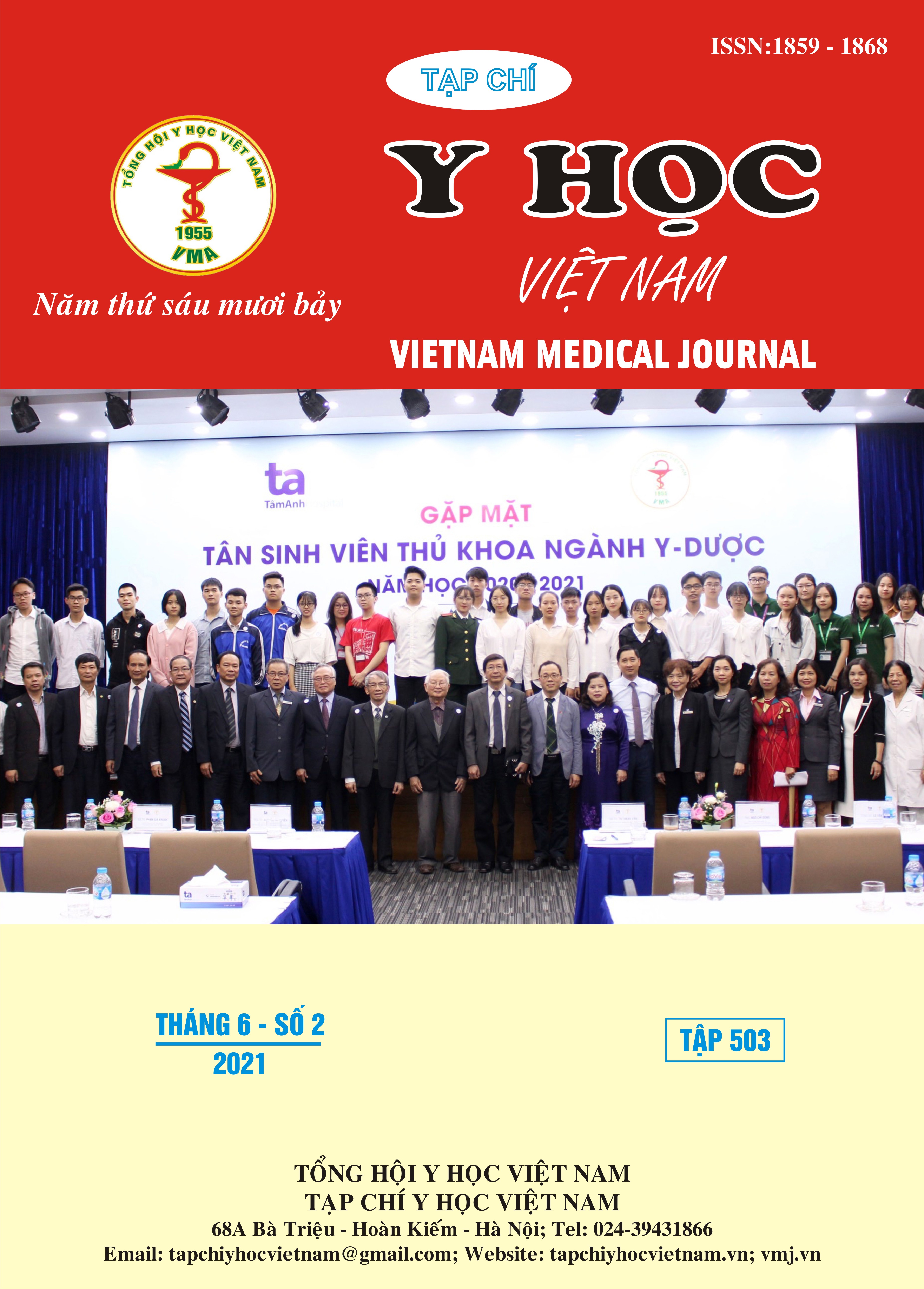ASSESSMENT THE SITUATION OF USING CORTICOSTEROIDS AT DEPARTMENT OF GENERAL INTERNAL MEDICINE AT CAN THO UNIVESITY OF MEDICINE AND PHARMACY HOSPITAL IN 2020
Main Article Content
Abstract
Objective: Assessing the situation of drug use in outpatient treatment through some indicators of drug use. Subjects and methods: The study was carried out by cross-sectional descriptive method with 400 medical records. Results: The sex ratio of using corticosteroids during treatment was 48% in men and 52% in women. The age group older than or equal to 60 years old (68.75%) accounted for the highest proportion, the second age group from 18-59 years old accounted for 30%. The mean hospital stay of patients was 6 ± 2.73 days. Methylprednisolone had the highest utilization rate (79.50%). The rate of using corticosteroids by injection had the highest rate (64.75%). The rate of use for anti-inflammatory purposes accounted for the majority of the total medical records surveyed (60.5%). The duration of corticosteroid treatment from 1 to 4 days is the highest rate (54.75%), the lowest is greater than 14 days, accounting for 5.5%. The percentage of patients with indications for corticosteroids not combined with non-steroidal anti-inflammatory drugs accounted for the majority (86%). The rate of serious drug interactions occurring between corticosteroids and other drugs (10.50%). Conclusion: The study is a reference for medical staff and leaders on the situation of drug prescribing in outpatient treatment at a Grade III medical facility.
Article Details
Keywords
Corticosteroids, situation of using corticosteroids, drug interactions
References
2. Lê Quốc Thịnh (2010), Chọn Glucocorticoid dùng ngoài để hạn chế tác hại, Bảng tin dược lâm sàng và điều trị, (1), Tr. 13.
3. Nguyễn Thị Hằng (2006), Khảo sát tác dụng không mong muốn của glucocorticoid trên bệnh nhân mắc bệnh hệ thống điều trị tại khoa dị ứng – miễn dịch lâm sàng – bệnh viện Bạch Mai, Luận văn chuyên khoa cấp I, Trường Đại học Dược Hà Nội.
4. Quách Thành Phúc (2013), Khảo sát tình hình sử dụng thuốc corticoid trong điều trị tại bệnh viện đa khoa huyện Thới Bình tỉnh Cà Mau năm 2013, Luận văn chuyên khoa cấp I, Trường Đại Học Y Dược Cần Thơ.
5. Getachew H., Assen M., Dula F., et al. (2016). Potential drug–drug interactions in pediatric wards of Gondar University Hospital, Ethiopia: A cross sectional study. Asian Pacific Journal of Tropical Biomedicine, 6(6):534-538.
6. Nabovati E., Vakili-Arki H., Taherzadeh Z., et al. (2014). Drug-drug interactions in inpatient and outpatient settings in Iran: a systematic review of the literature. Journal of Pharmaceutical Sciences, 22(52):257-261.
7. Nogué M, Rambaud J, Fabre S et all. Long-term corticosteroid use and dietary advice: a qualitative analysis of the difficulties encountered by patient. BMC Health Serv Res. 2019 Apr 26,19(1): 255.
8. Oray M, Foster CS, Ebrahimiadib N. Long-term side effects of glucocorticoids. Expert Opinion on Drug Safety,January 2016,15(4): 457-65.


